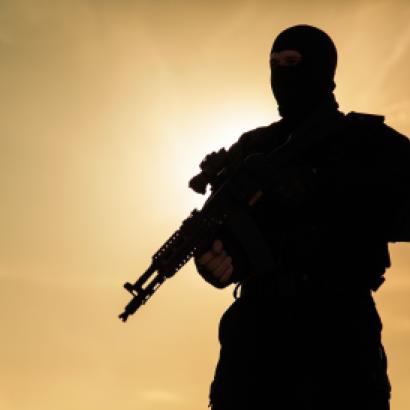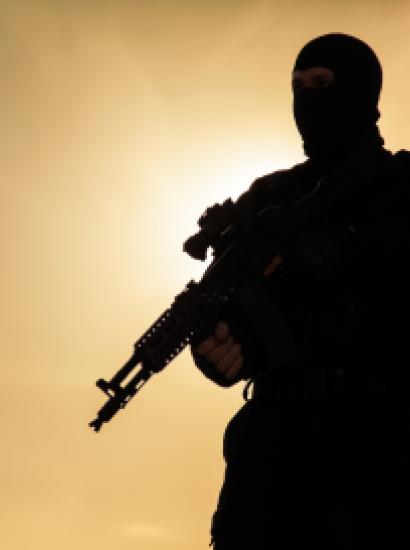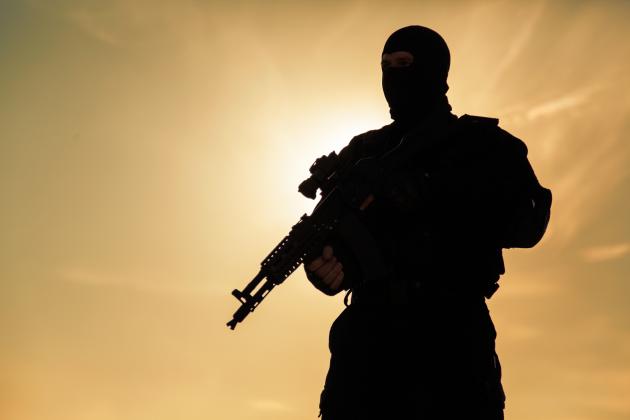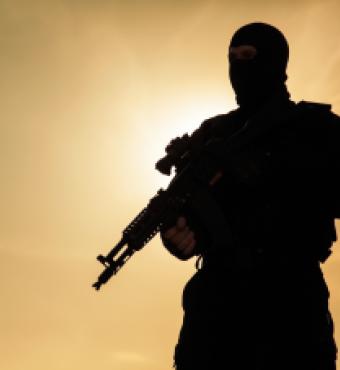On March 22, masked gunmen stormed a concert hall outside Moscow, killing at least 137 people and leaving the venue in ruins. The attack, claimed by Afghanistan’s branch of the Islamic State Khorasan Province, or ISIS-K, was the deadliest in Moscow in two decades and a stark reminder of the continuing threat posed by the group. ISIS-K’s aims are far-reaching, and its tentacles extend far beyond its remote training camps in South Asia. Combating the group and others like it must remain a top U.S. foreign policy priority even as Washington rightly shifts more of its attention toward competition with China and Russia. But ISIS-K has a growing regional network, and countering it will require more significant regional engagement, along with the U.S. and other powers – even Russia -- stepping up, to deter it over time.
As General David Petraeus, who led U.S. Central Command and NATO/U.S. forces in Afghanistan before serving as director of the CIA, underscored in an interview for this research: “We have learned, repeatedly, that if you don’t keep an eye and pressure on extremist groups, such as ISIS, they will reconstitute and once again engage in organized, sophisticated extremist acts.”
ISIS-K’s global ambitions have grown steadily since 2021, when it claimed responsibility for a devastating suicide attack at Kabul International Airport in the midst of the United States’ military withdrawal from Afghanistan. In 2022, it orchestrated a fatal suicide bombing at the Russian embassy in Kabul, and staged cross-border attacks from Afghanistan into Uzbekistan and Tajikistan. And early this year, following 2022 and 2023 attacks in Shiraz and Mashhad, ISIS-K executed the most deadly terrorist attack that Iran has experienced since the 1979 Islamic Revolution--a double suicide bombing that claimed the lives of nearly 100 people attending a memorial for Revolutionary Guards commander Qassem Soleimani.
Somewhat paradoxically, ISIS-K has experienced setbacks in its traditional areas of operation in Afghanistan due to relentless Taliban pressure. Two and a half years ago, as the last American troops left the country, the United States pledged billions of dollars in aid to alleviate Afghan suffering and facilitate efforts to counter ISIS-K in Taliban-ruled Afghanistan. In addition to providing humanitarian relief, the aid aimed to thwart cross-border extremism, drug trade, arms proliferation, and mass displacement. Although Afghanistan has seen a dramatic increase in violence by the al Qaeda-affiliated Pakistani Taliban, an umbrella outfit that aspires to overthrow the Pakistani state, Western counterterrorism efforts have been surprisingly successful against ISIS-K in tactical operations—the result of a transactional partnership between the United States and the Haqqani network, the most powerful faction of the Taliban government. The Haqqanis maintain an alliance with al Qaeda, but view ISIS-K as a competitor and a threat to their interests and so have cynically cooperated with U.S. security officials and other regional counterterrorism actors to hunt down and eliminate the group’s leaders in Afghanistan, resulting in significant losses throughout 2023.
But far from eliminating the threat, the Taliban’s routing of ISIS-K in Afghanistan has simply displaced its key leaders. According to U.S. and UN officials familiar with ISIS-K's cross-border operations, the terror group has relocated its leadership and center of gravity to remote and lawless safe havens in Afghanistan and Pakistan, from where the group continues to pose a threat to the region and Western interests abroad. At present, the Taliban lacks the capacity to target ISIS-K in Pakistan, and it is difficult for the United States to conduct operations there. Pakistan denies sponsoring terror proxies and continues to work with Washington to counter select threats from anti-Pakistan groups, such as al Qaeda and the Pakistani Taliban, but on its own Islamabad isn’t up to the task of addressing the threat from ISIS-K within its borders.
Up to now, world leaders have failed to develop a coherent strategy to contain ISIS-K. Partly, this owes to the evolving rivalry between the United States, China, and Russia, which has seemed to preclude closer security cooperation in South Asia. Yet even amid the revival of great-power competition, Washington and Moscow have for years committed to the shared goal of eliminating the threat posed by ISIS in the Middle East, mainly in Iraq and Syria, by deconflicting counterterrorism strikes, a current arrangement that remains in effect. At the same time, limited knowledge of ISIS-K’s leadership and multifarious relations has resulted in an erroneous perception of the group. What the displacement of key ISIS-K leaders between Afghanistan and Pakistan and the group’s continued global reach have underscored, however, is that any strategy to contain ISIS-K will have to be global and multilateral—a hammer and anvil strategy to put the squeeze on the group, lest it relocate to safe havens across sovereign borders.
The Evolution of ISIS-K
Established in Afghanistan in 2015, largely from disgruntled Pakistani Taliban, Islamic Movement of Uzbekistan, Hezb-e Islami, and Kunar Salafists cadres, ISIS-K pledged allegiance to ISIS in the Middle East but the ISIS-K emir’s real objective was to create a branch of the self-proclaimed caliphate across the Khorasan—an ancient Persian term for a region that includes parts of Afghanistan, Iran, Pakistan, Tajikistan, Turkmenistan, and Uzbekistan.
Inside Afghanistan, that project has been largely thwarted by the Taliban. In 2019, with the fall of ISIS-K’s enclaves in Nangarhar and Jowzjan in southeastern Afghanistan, the group was forced to adopt a clandestine strategy similar to the foco theory of insurgency promulgated by Che Guevarra. It has staged aggressive raids into Nimruz, Balkh, and Kabul, concentrating on relatively remote regions before moving to consolidate power in city centers. But over the last year, the Haqqani network has consolidated an edge over ISIS-K in Afghanistan by aggressively targeting its senior leadership and selectively sparing the West from some attacks. Among the figures ISIS-K has lost are financial official Abdul Malik, an architect of the Kabul airport bombing, Kabul attack plotter Qari Fateh, and ISIS Indian subcontinent leader Abu Usman al-Kashmiri. The Taliban has sought credit for these and other efforts to counter terrorism in Afghanistan and prosecuted relentless, methodical campaigns against ISIS-K fighters in the Salafist belt provinces of Kunar, Nuristan, Nangarhar, and Badakhshan.
In June 2023, Sirajuddin Haqqani, the Taliban’s number two and the de facto controller of Afghanistan’s domestic security and intelligence organs, ordered systematic assaults on ISIS-K’s top leaders, including its emir Shabab al-Muhajir—who was allegedly injured in Kunar and promptly fled to Baluchistan province in Pakistan. That cross-border shift is dangerously reminiscent of bin Laden’s escape from Tora Bora in eastern Afghanistan into Pakistan. The U.S. government and many U.S. analysts continue to argue that providing foreign aid to the Taliban government is necessary to effectively combat the primary international terrorist threat in Afghanistan, ISIS-K. But by focusing on leadership removal and maintaining a narrative of permanent jihad, the Taliban’s counter-ISIS-K approach is just ensuring a steady stream of new recruits, funding, and propaganda for the group and making its long-term survival more likely.
Today, ISIS-K aims to grow its operations in lawless regions of Afghanistan and Pakistan that are beyond the control of either capital, starting by expanding its base in Baluchistan. According to a July 2023 UN report, ISIS-K is comprised of roughly 4,000 to 6,000 fighters and family members. If left unchecked, “ISIS-Khorasan retains the capability and will to attack U.S. and Western interests abroad in as little as six months and with little to no warning,” General Michael “Erik” Kurilla, the commander of U.S. Central Command, told a Senate committee hearing this month. According to the U.S. National Security Council, over a dozen migrants from Uzbekistan and other countries with ties to ISIS gained entry into the United States in August 2023, although a specific plot has yet to be identified. FBI Director Christopher Wray echoed these concerns in March 2024: “There is a particular network that has—some of the overseas facilitators of the smuggling network have—ISIS ties that we’re very concerned about, and we’ve been spending enormous amount of effort with our partners investigating.”
The Enemy of My Enemy and Friends
Shoring up the global coalition against ISIS-K may prove to be a formidable challenge, but the United States and its allies are not the only stakeholders that have legitimate reasons to undertake this task. Despite their divergent views, China and Russia share a mutual concern that Afghanistan and Pakistan could potentially become safe havens for international terrorists, which is in part why both countries have military bases in Tajikistan. Beijing remains worried about the prospect of jihadist activity in its Xinjiang region, which sits close to Afghanistan, while terror groups tied to ISIS in mineral-rich Baluchistan (where ISIS-K is reportedly burgeoning), are focused on targeting strategic interests across China’s China-Pakistan-Economic Corridor, part of its broader Belt and Road initiative. Moscow has historically shown no compunction about using proxy terror forces to help oust U.S. forces from the region, but it is increasingly wary of the potential for blowback in the form of domestic terrorist attacks — such as the 2017 al Qaeda attack in St. Petersburg that killed nearly a dozen and last month’s ISIS-K attack outside Moscow. Iran, too, worries, not unreasonably, about countering an extremist Sunni resurgence on its eastern border that views Shi’a as apostates, as demonstrated by its January 2024 counterterrorism strikes against Jaish al-Adl cells linked to ISIS-K in Pakistan’s Baluchistan province. For this reason, among others, Iran sought to warn Russia ahead of the latest ISIS-K attack, as did the United States.
Saudi Arabia and Qatar are often viewed as fonts of extremist ideology and finance for jihadists. But the United States has partnered with both countries as effective interlocutors in counterterrorism operations, particularly where they maintain diplomatic “good offices” with Pakistan’s intelligence services and the Taliban-Haqqani networks countering ISIS-K extremists in Afghanistan and beyond. All of these powers must be increasingly engaged as part of a more comprehensive strategy to defeat ISIS-K—and Islamic extremism more broadly. Bringing together disparate regional and world powers against ISIS, however, will require intensive diplomacy. The United States’ counter-ISIS envoy could engage the UN’s sanctions committee against ISIS and al Qaeda and advocate for the listing of financiers of the group, some of which use electronic money services like Monero, that are not subject to national jurisdictions and therefore not affected by designations executed through the Treasury’s Office of Foreign Asset Control. At the same time, U.S. policymakers could craft a broader global approach toward the threat in South Asia, and toward mitigating civilian harm in partnered operations against Islamic extremists. Until now, in stark contrast to its actions in the Middle East, the United States has generally been reluctant to build a counter-ISIS coalition and related intelligence monitoring and collection platform in South and Central Asia. But that view may be changing.
According to retired Lieutenant General Michael Nagata, who led United States Special Operations forces against ISIS in Iraq and Syria, "America and its allies are now confronted with the need to contest ISIS more strongly and in multiple regions across South Asia, the Middle East, and Africa." He continued: "the jihadist organization remains the most dangerous and fiendishly complex terrorist movement in the world, and depending solely on 'over the horizon' counterterrorism efforts to safeguard United States and allied interests has already proven unable to contain the military prowess and expansion of the Islamic State."
This is a critical moment. If the United States can more effectively limit and contain the influence of ISIS-K in South Asia, it would be a strong step toward preventing Afghanistan and Pakistan from becoming a larger breeding ground for terrorism. But Washington will need international partners for any such strategy to work. Even in a limited form, a more significant multilateral approach between the United States, Saudi Arabia, Qatar, and other nations toward the ISIS threat in South Asia would do much to quell the expansion of its networks and potentially stave off more bloodshed in the wider region—and very likely in the rest of the world, too.
Dr Melissa Skorka, a Visiting Fellow at Stanford University's Hoover Institution in the Middle East and Islamic World working group, served as a Senior Advisor to the former Joint Chiefs of Staff Chairman General Joseph F. Dunford in Afghanistan and the International Security Assistance Force from 2011 to 2014. This article was prepared by the author in her personal capacity. The views and opinions expressed in this article are those of the author and do not necessarily reflect the official policy, opinion, or position of her employer.

















